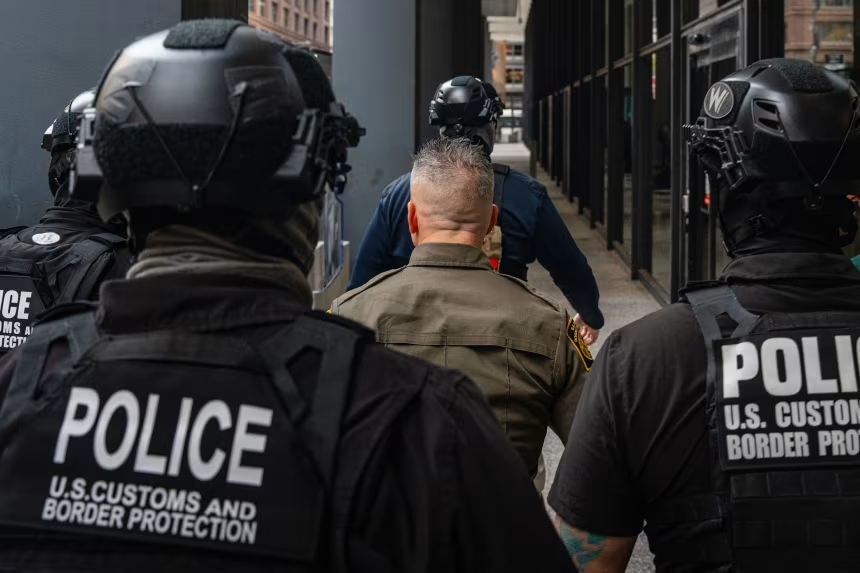CHICAGO — A federal judge on Tuesday sharply questioned Border Patrol leadership over allegations that agents deployed tear gas and less-lethal munitions on demonstrators and journalists in violation of court-ordered restrictions, deepening scrutiny of the Trump administration’s aggressive immigration enforcement campaign in northern Illinois.
U.S. District Judge Sara Ellis summoned Chief Gregory Bovino, who oversees “Operation Midway Blitz,” after receiving reports that federal agents had failed to issue clear warnings before dispersing crowds — a key requirement under her temporary restraining order issued earlier this month. The judge directed Bovino to appear in her courtroom every evening for the next week to provide daily compliance updates.
More than 3,000 arrests have been made since the operation launched in September, according to the Department of Homeland Security (DHS). But the crackdown has triggered multiple legal challenges from protesters, journalists, and clergy, who accuse agents of firing pepper balls, deploying tear gas without justification, and limiting press access.
Judge Allows Limited Tear Gas Use — For Now
Despite expressing concern about alleged overuse, Ellis declined to grant plaintiffs’ request for a full ban on tear gas, saying she did not want to “tie the agents’ hands.”
However, she reiterated that tear gas may only be used if there is an immediate threat to safety, and only after issuing audible and intelligible warnings.
“The warning has to include what you’re going to do, before you do it, and allow people an opportunity to comply,” Ellis said, citing videos that appeared to show gas deployment without any visible threat.
Ellis ordered DHS to turn over all use-of-force reports and relevant body-camera footage from September 2 through last Saturday, placing them under seal. A hearing to determine whether her temporary order should be extended is scheduled next week.
Body Cameras Take Center Stage
The judge sharply emphasized the importance of body-worn cameras, calling them “your friends” in documenting threats and justifying force. Bovino acknowledged that while most of his agents wear cameras, he does not — despite participating directly in crowd enforcement.
Earlier this month, federal officials assured Ellis that all agents interacting with protesters were equipped with cameras. Bovino told the court he would work to obtain one by Friday.
Plaintiffs accuse Bovino of personally throwing a tear-gas canister into a crowd on October 23. DHS has claimed he was struck in the head beforehand — but that impact was not visible in publicly released footage. Video reviewed by CNN shows objects thrown toward agents, but not the alleged strike to Bovino’s head.
Community Outrage Grows
Ellis suggested that the tactics used have eroded residents’ sense of security, referencing a reported tear-gas incident in Old Irving Park during a children’s Halloween parade.
“Kids in costumes walking to a parade do not pose an immediate threat,” she said, emphasizing that lawful presence in public spaces cannot be grounds for force.
She expressed concern for neighborhoods like Little Village, where residents reportedly fear everyday movement due to enforcement activity.
“That’s not how any of us want to live,” Ellis added.
High Stakes as Enforcement Continues
Critics argue that the operation’s tactics are excessively militarized and disproportionately impact immigrant communities. Supporters of the administration insist the aggressive strategy is necessary to curb unrest and enforce immigration law.
For now, Ellis’ mandate stands: warnings must be issued, force must be justified, and conduct must be “objectively reasonable.”
Whether those standards have been met will be tested again next week — when the court decides if temporary restrictions should become a longer-lasting injunction.

